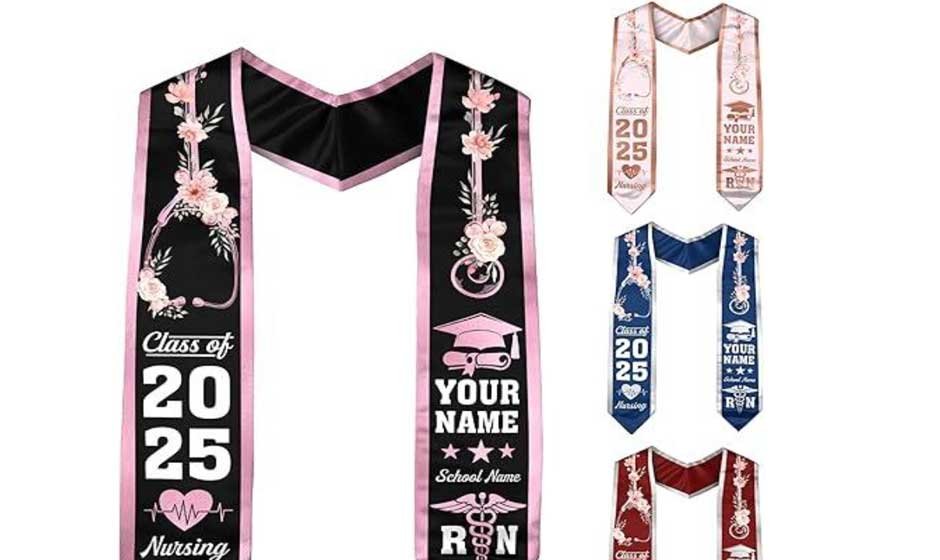Graduating with a Bachelor of Science in Nursing (BSN) is a momentous occasion—one that marks years of hard work, clinical practice, and unwavering dedication to a career of service. Among the many traditions that nursing graduates cherish, the BSN stole stands out as a symbol of both academic success and professional pride.
What Does the Stole Represent?
Worn over the shoulders during the ceremony, this elegant sash—often crafted from satin or silk—features meaningful embroidery such as the graduate’s degree initials, school crest, or the iconic caduceus. While visually simple, it carries profound significance: it marks the completion of a demanding academic and clinical journey and serves as a declaration of readiness to serve in one of the world’s most trusted professions.
Celebrating the Journey
Earning a BSN isn’t merely about passing exams. It’s about mastering clinical competencies, responding to real-life patient scenarios, and learning to lead with compassion. The stole reflects that journey, from the first lecture on human anatomy to the final days of clinical rotations. It becomes a symbol of everything endured and achieved along the way.
To the graduate, it is a badge of honor. To everyone else, it’s a visible reminder of the discipline, care, and dedication required to earn the title “nurse.” For many, it becomes a keepsake—one that evokes memories of long nights, hard-earned breakthroughs, and the support of peers and mentors.
Making It Personal
While the sash has a shared purpose, nursing graduates often make theirs unique. Personal touches like embroidered names, school logos, or tributes to culture and heritage add individuality. Flags, inspirational messages, or symbols from student organizations often appear, making each piece as distinctive as the story behind it.
These customizations give graduates a chance to bring their narrative to the stage, showing who they are, where they’ve come from, and what drives them forward.
Evolving Meaning in a Changing Profession
Traditionally, academic stoles were reserved for those in honor societies or special programs. Today, they serve a broader role, especially in nursing. The sash worn by BSN graduates has come to signify not just academic achievement but a deeper calling—to heal, to advocate, and to lead.
As the role of nurses continues to evolve in an increasingly complex healthcare landscape, the visual symbol of their qualification has taken on greater weight. Many institutions now prefer or require nurses to hold a BSN, and this simple garment affirms that standard.
Where to Find One That Speaks to You
If you’re preparing for graduation, choosing a stole that reflects your journey can be a meaningful part of the experience. Whether you prefer a traditional look or a more personalized design, there are excellent sources available online.
One such resource is mygradstoles.com, offering high-quality, customizable options tailored to nursing graduates. With a range of styles and add-ons, it’s easy to find one that aligns with your story.
More Than Just Fabric
Among the many traditions of graduation day, few items carry the emotional weight of the stole. It’s not just part of the attire—it’s a statement of identity and a tribute to perseverance. For nursing graduates, it marks the beginning of a future as a caregiver, advocate, and leader.
It also honors the friends, family, and mentors who supported the journey. Seeing a graduate cross the stage wearing it is a moment of shared pride—a celebration of every obstacle overcome.
Final Reflection
Though it may seem like a simple accessory, the graduation stole worn by BSN-prepared nurses is rich with meaning. It represents not only the knowledge and skills gained but also the compassion and resilience that define the profession. As these graduates step into their roles in healthcare, the sash they wear reminds them—and everyone around them—of the responsibility they carry and the difference they are destined to make.
Whether you’re walking the stage yourself or cheering someone on, remember: it’s more than a piece of cloth. It’s a legacy in the making.










